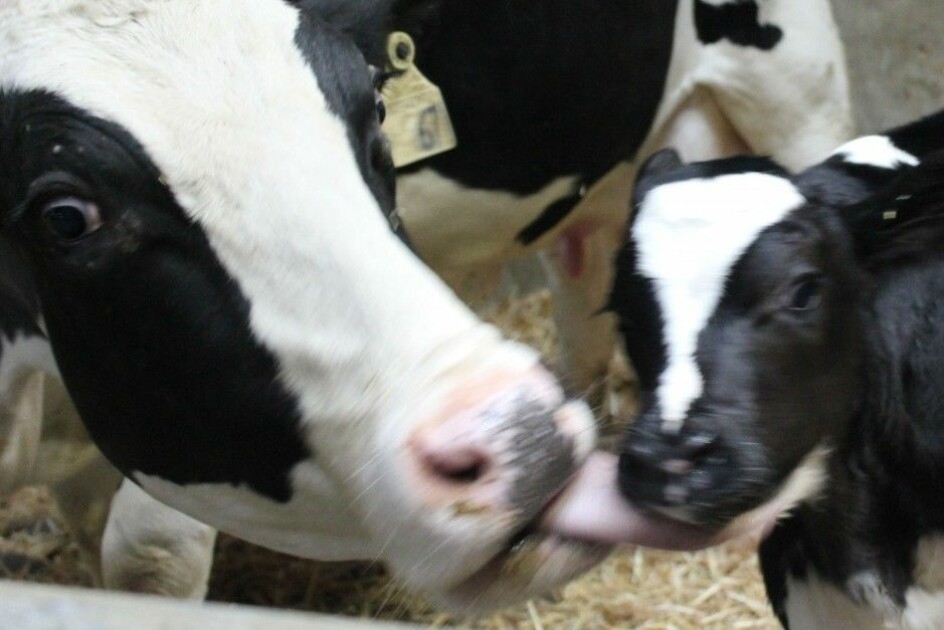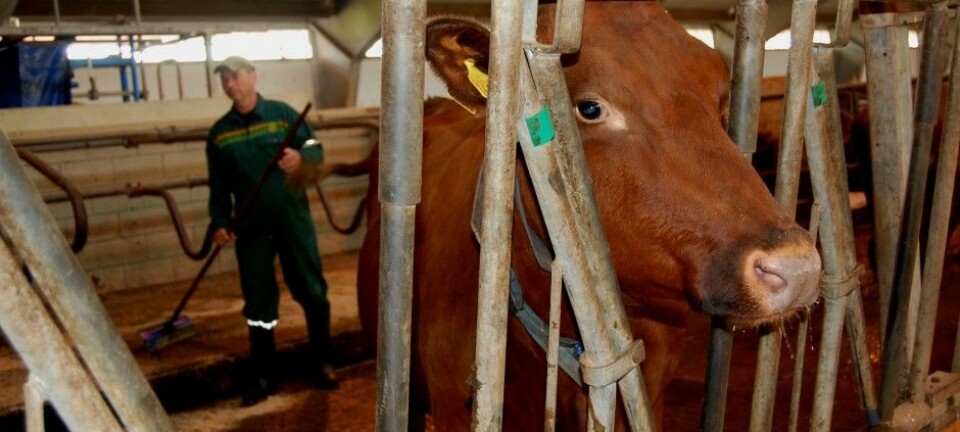
She’s given birth to six calves before — but now she finally gets to be a mother
Most dairy cows aren’t allowed to mother their calves. Julie Føske Johnsen from the Norwegian Veterinary Institute is leading a new research project where cows get to visit their calves.
It’s calm in the barn at the Animal Production Experimental Centre, at the Norwegian University of Life Sciences. Three young calves are taking an afternoon nap on some soft wood chips. One of their mothers lies outside of the pen and is resting with a girlfriend. The mother and her calf can see and hear each other through cracks in the wood.
Ole, Dole and Doffen, as they are called, stand up. Not long after, the entrance gate rocks open as "Old Mother" comes to visit. Special ear tags give her and two other mothers access to the pen where the calves are located.
"Old Mother" has had six calves before. But this is the first time she's allowed to be a mum.
Calves are taken from dairy cows on the day they are born under conventional operations. But does it have to be like that?
A good idea
Julie Føske Johnsen completed her doctorate on keeping cows and their calves together. When she delivered her dissertation, she was ready to study something else. But now she's back on the same subject.
During an innovation camp in February, she and the group she was with came up with an idea. How about designing an approach that allows a mother cow to visit her calf?
“The idea was to create a solution where the cow and calf are together, but not all the time, and where you can also keep them a little apart. That’s how you can prepare the calf to be a ruminant and for its future life,” Føske Johnsen says.
Irma Caroline Oskam, the head of the Animal Production Experimental Centre at NMBU, grabbed Johnsen when she heard the idea. "We'll do this!" Oskam said.
Now a prototype has been installed at the university’s research farm in Ås, south of Oslo. The first calves have moved in.
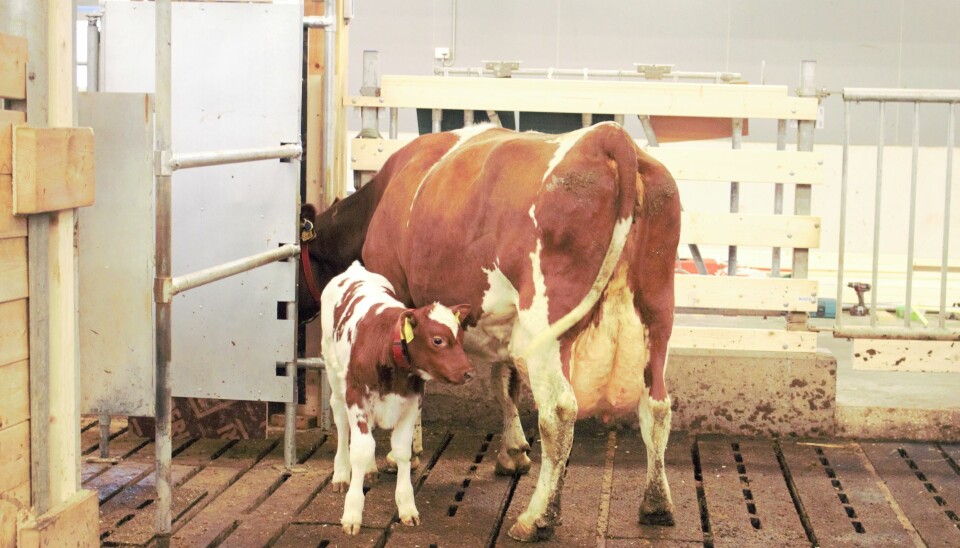
A party in the barn
The three calves have access to a large pen, sleeping area, hay, milk and grain feed from an automatic feeder. They can also suckle from their mother when she comes to visit.
The pen is separated from the milk cows with a gate that only the mothers can pass through. That's because the ear tag is read by a sensor at the gate. Initially, the mother cows can go in and out as much as they want. Gradually, researchers can limit contact by just letting the cows in during the morning and evenings, for example. That’s a way to gradually wean the calf from drinking milk from its mother’s udders.
The solution has been named Smart Calf Care, but so far it only exists as a prototype at the Animal Production Experimental Centre.
"When a new cow-calf couple moves in, the other mothers stand in a row and moo and stare," says Johnsen.
“A calf has come into the barn, and they have hardly seen this happen before. Then it’s time to party!” she said.
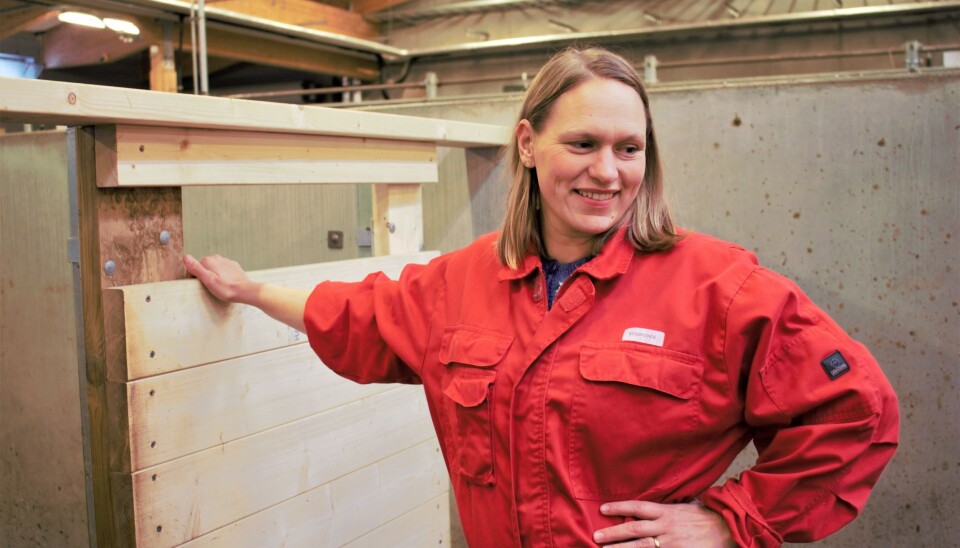
Calves that drink milk
Nursing cows that are not used for milk production are generally allowed to be with their calves. But most dairy cows aren’t allowed to do this. The exception is on organic farms, where the requirement in Norway is that the calf be with its mother for at least three days. Normally, however, it is common practice to separate the cow and its calf the same day or the day after birth.
The cow is then inseminated as soon as possible and her milk is sold for human consumption.
"The calves are taken from their mothers to avoid the stress of separation later, and to ensure that farmers get as much milk as they can to sell", says Føske Johnsen.
Calves that don’t suckle from their mothers do drink milk, she says.
“But they often drink less milk than they would like. This has long been normal practice, because it gets the calf eating roughage and helps develop its ruminant function. But the tide is turning. Today's recommendation is to give calves a little more milk because it is important to prevent low growth levels and hunger on the part of the calves,” she said.
Some farmers give the calves milk that can’t be sold anyway, while others provide good quality milk.
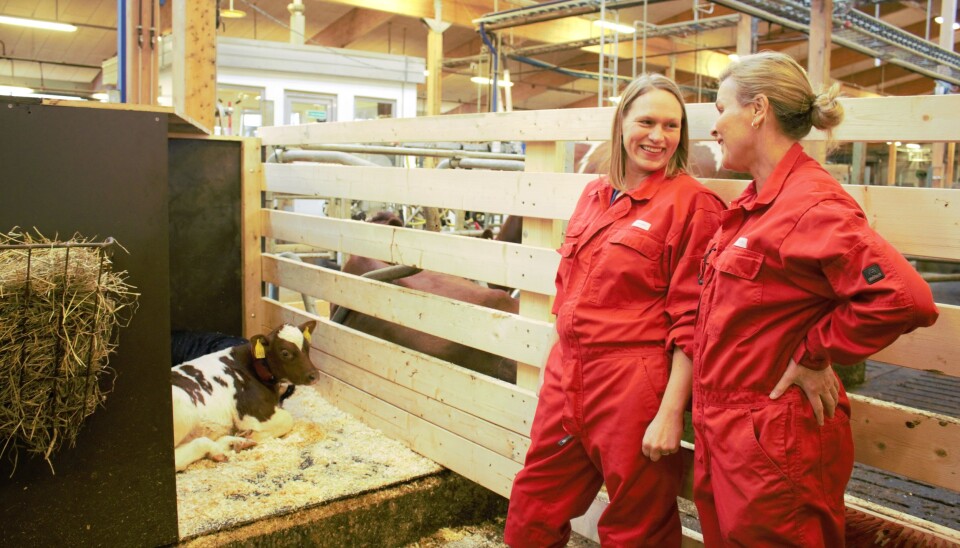
Cow and calf together all day on this farm
At the Grøndalen farm in Nes, Hans Arild Grøndahl has let his dairy cows be with their calves since 1999. Now his son has taken over the operation.
“The reason we started with it this because I started asked questions about what I wanted to achieve and what we should give back to the cow. Animal welfare is about satisfying the animals' most natural needs. For a cow, a dog mother, cat mother or human mother, one of the most important things in life is to look after their offspring. Why don't we let dairy cows do this?” Grøndahl asks.
“When we started letting cows and their calves stay together, we saw amazing scenes from real life. The calf walks with its mother, it gets affection, it gets cared for and it gets to drink as much milk as it wants. Our cows and calves effectively told us this was right,” he says.
At Grøndahl’s farm, the cow is taken into a separate stall when she is about to calve. Then the cow and calf get to spend five days alone. This allows them to bond with each other before they are both released to the herd.
“Here, they are together day and night for two months,” says Grøndahl.
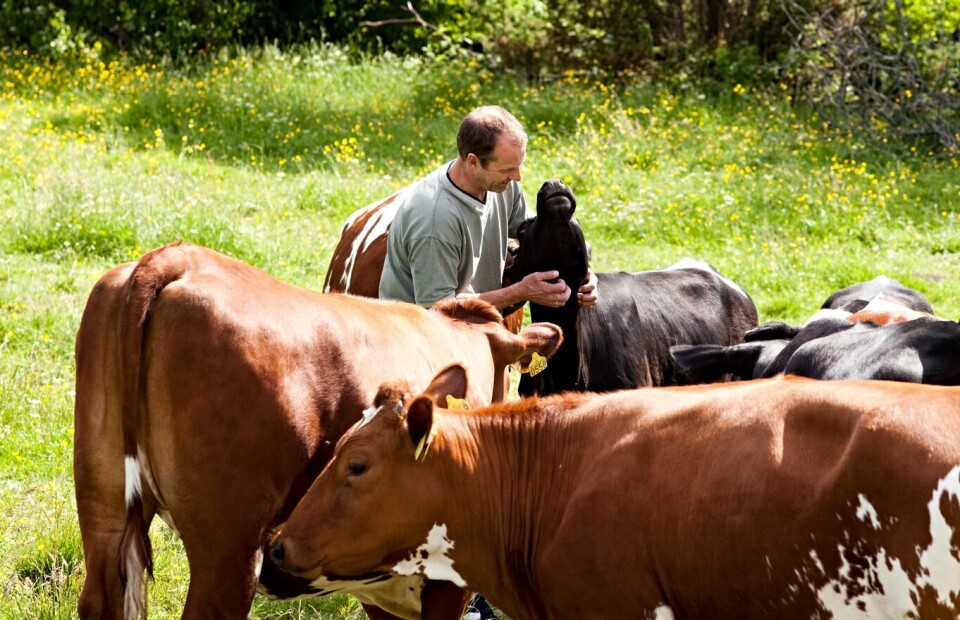
Give their lives for us
Grøndahl is still able to produce milk to sell even with this set up, he says.
“The calf doesn’t drink the 6-8 litres which is the standard for feeding calves in Norway. Calves can drink up to 12-15 litres. A lot of people say that this is bad business. My response to this is: if you as a consumer know that I have to starve my calf for you to buy cheap milk, then I don’t think you want to buy milk at all.”
A dairy cow produces between 20-35 litres of milk a day. The amount of milk a calf drinks when they can decide themselves depends on how old they are.
“When the calf is a newborn it drinks maybe 8-10 litres. If the mother cow produces 20 litres of milk, that leaves 10 litres to sell,” Grøndahl says.
As the calf grows, it may consume up to 15 litres, so if the cow produces 30 litres, then there’s15 litres left for the farmer to sell. This varies throughout the weeks until the cow and calf are separated.
When the calves are two months old, Grøndahl separates them from their mother. That's because they drink up to 20 litres of milk a day at this point, which doesn’t leave much left to be sold. Grøndahl encourages them to drink smaller quantities of bottled milk and to eat more roughage. The cow continues to make milk that can be sold for about eight more months.
“The cow and the calf give their lives so that we can drink milk and eat meat. This is about us as consumers having to be willing to pay whatever it takes for an animal to spend a lifetime in our service. Maybe the animals deserve to be seen more and maybe they deserve to be mothers,” says Grøndahl.
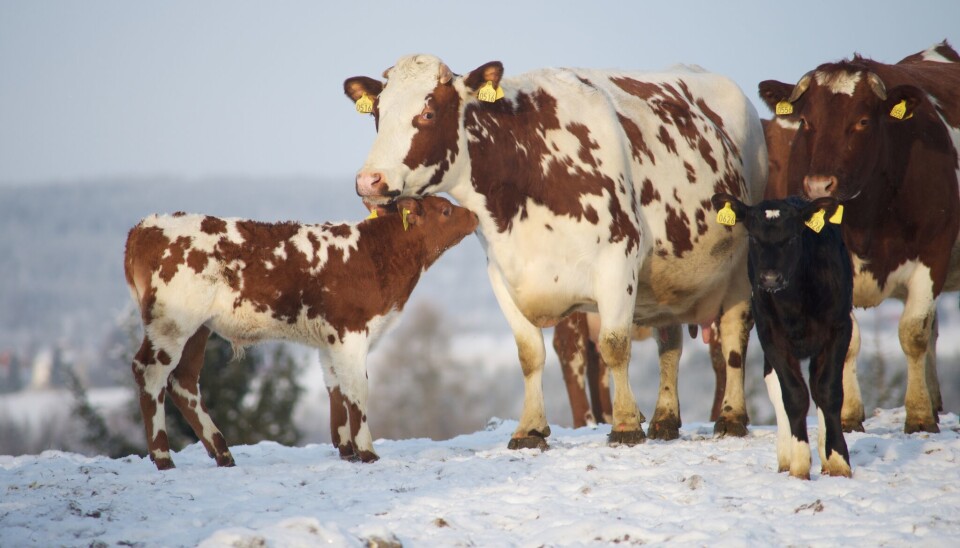
Hard to get everyone to take the same approach
Hans Arild Grøndahl doesn’t have a gate that controls when the cow and the calf can be together. But he believes that Smart Calf Care, Føske Johnsen’s research project, may be an alternative that is easier for some — but not all — operations to adopt.
“It's a variant. It is important that the calf and the cow spend time together, that they get to be social and that the calf learns to be part of a working herd. The calf may not need to suckle its mother, it can be partially fed via an automatic feeder,” Grøndahl says.
Leif Jarle Asheim is a researcher at the Norwegian Institute of Bioeconomy Research (NIBIO) and has been involved in a project that looked at the financial aspects of allowing cows and calves to stay together.
In a study published in the academic journal Review of Agricultural, Food and Environmental Studies, researchers cautiously concluded that allowing the cow and her calf to stay together was just as sound financially as the traditional approach, because of better calf growth and better animal welfare and animal health. But the researchers pointed out that their selection may have affected the results. Farmers who allowed cows and calves to be together often had fewer animals.
Profitability also depends on what kind of milk quota you have, says Asheim.
"Norway has a two-price system for milk production. What you sell within your quota is quite profitable, but what you sell above the quota you might as well just give to the calf,” he says.
He says that allowing a cow and a calf to be together does bring benefits, but that there’s no good arrangement that can work for everyone in practice.
“In traditional dairy barns where the cow is held in place, it is probably difficult to find workable solutions. I believe that in the long term we should find a solution that can be both animal friendly and that milk producers can work with. After all, it is a lot of work to feed the calf, and if the cow could take part of that work it would be an advantage,” he said.
Norway has postponed a requirement that all cows be allowed to move freely in the milking barn to 2034. The requirement was initially put in place in 2004 and intended to be fully operational by 2024.
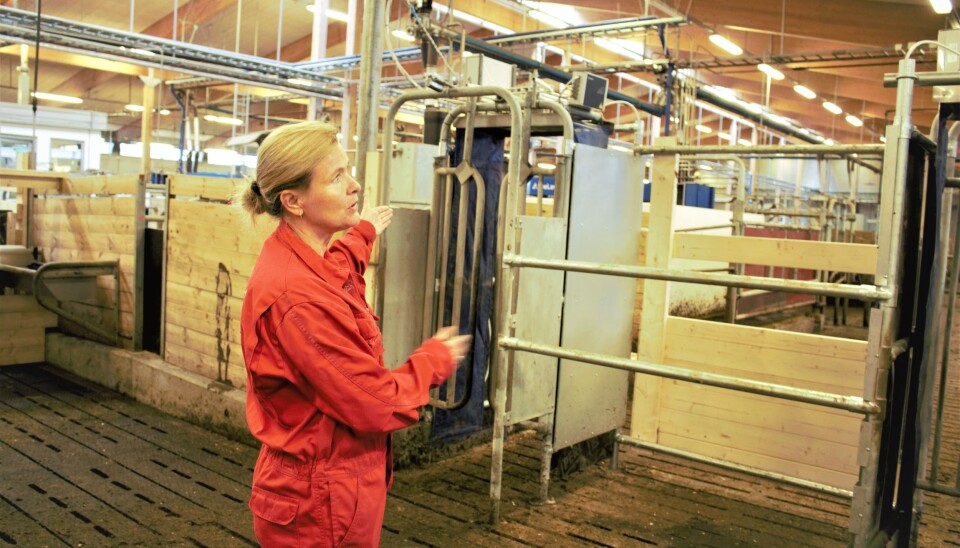
Fast growth
In the barn at the experimental farm on Ås, Ole the black calf is peeing with a dreamy look on his face.
His mother is waiting on a line to be hooked up to the milking robot. For now, Føske Johnsen has set things up so that the mother cows have to be milked before going to be with their calves.
Little Ole is growing like a weed. At most he has put on 1.7 kilos daily, as opposed to 0.7 kilos, which is the norm. Now he probably drinks 15 litres of milk a day.
“For the system to be profitable for the farmer, he or she must be paid more per litre of milk, or get paid for beef calves. With the kind of growth we see here, you can imagine that these will be attractive beef calves to continue to raise,” says Føske Johnsen.
Can monitor everything
The researcher has everything she needs to study the system. The first period is soon over and Ole, Dole and Doffen will soon move in with the other calves.
This first period was essentially a test of technology to see if everything worked as it should. The next step is for Føske Johnsen to monitor the cows and calves' behaviour, measure their food intake, health status and more.
The automatic feeder can read each calf’s ear tag, so Føske Johnsen can see which calf is eating and exactly how much.
“Do you see how happy I am?” she says, enthusiastically.
She also has access to video surveillance of the pens.
“This morning the cows were standing outside and waiting to come in. When they were let in, all three went to be with their calves at the same time, and there was lots of licking and suckling and licking and suckling for over an hour,” she says.
“One of the things we would like to see is whether the cow is motivated to visit her calf. That’s probably something we can answer right now. She is motivated and she spends an incredible amount of time licking that calf,” Føske Johnsen says.
She also sometimes watches the video feed before she goes to bed, just to see how things are going.
“Then it's disco time. The three little calves are running around at full speed,” she said.
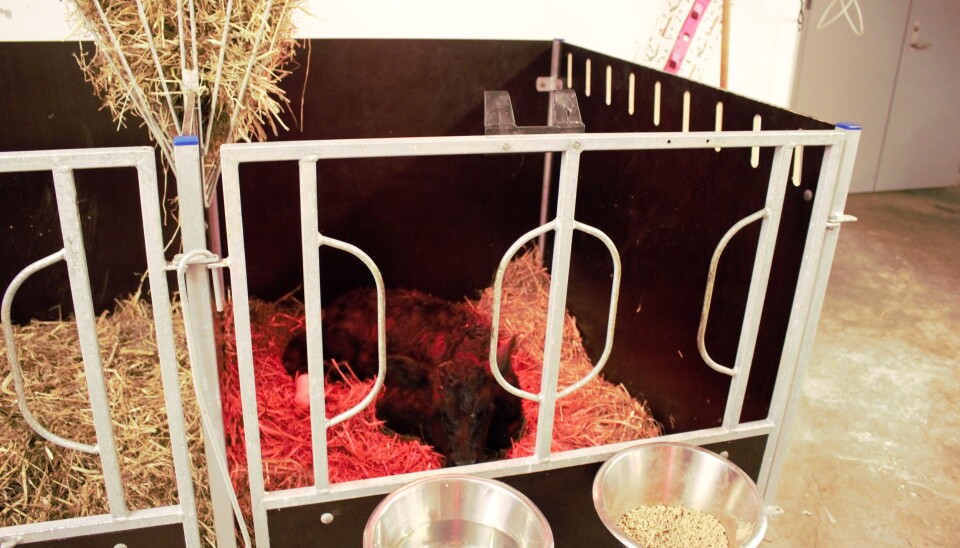
A traditional pen
In another area of the experimental farm, calves are raised in the more traditional way. A newborn calf that is one day old is lying in a pen with straw. Norway allows farmers to keep their calves in this type of pen for two months. It is alone there, and has just enough room to turn around.
This is not the practice at the research farm. Within a week, the calf will be put in a pen with same-aged animals. In the future, four newborn calves will be allowed to be with their mothers to test the new system.
Oskam and Føske Johnsen are excited about the results. So far, the experiment has worked beyond their expectations.
The new system required some part of the barn to be rebuilt. But the technology behind smart doors is not new or unavailable.
“Allowing the cow and calf to be together as an idea has really taken off lately. Not only in Norway but in the Nordic countries and elsewhere in Europe as well. There is a lot of focus on it, including within the industry,” says Føske Johnsen.
Oskam is pleased that the Animal Production Experimental Cmentre is a partner in the project.
“Animal welfare is an important topic and something we are focused on,” she says.
———








